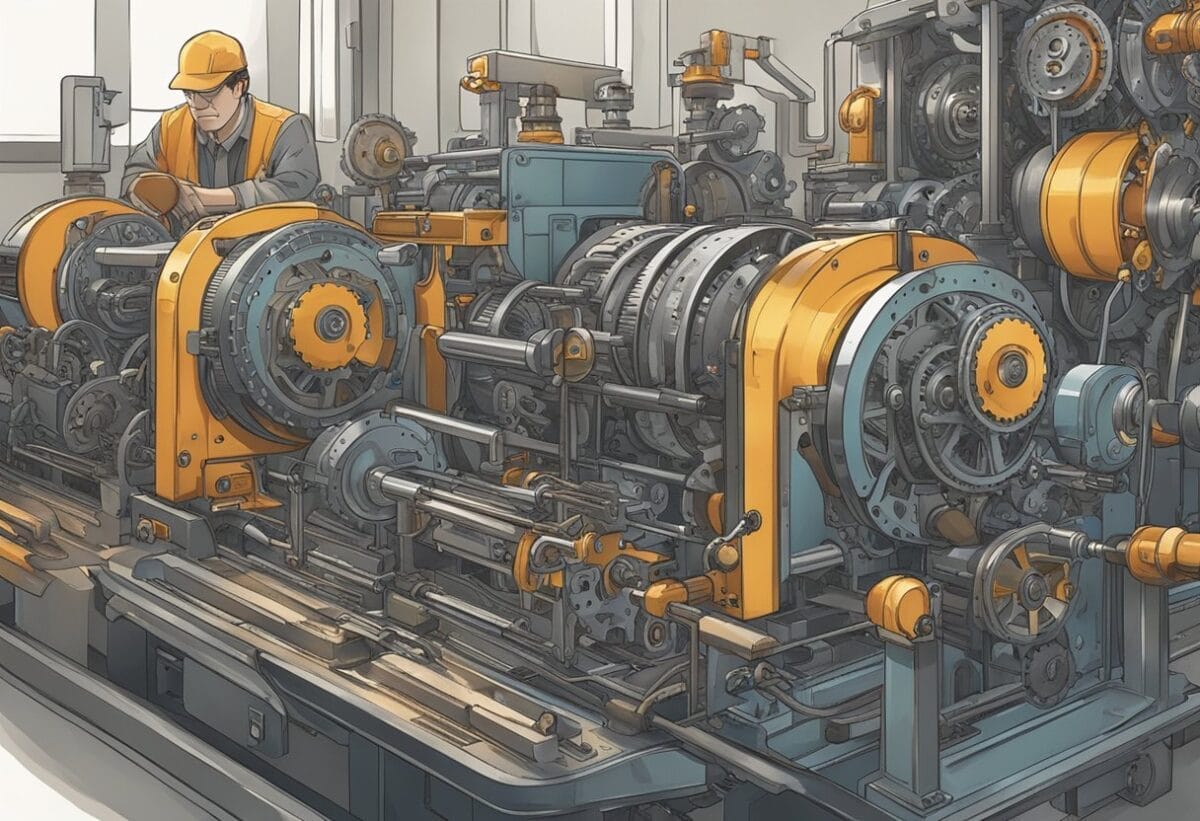Amount the many job interview questions, one of the most common interview question is about improving a process. Employers like to ask this to see if you’re proactive and they want to know if you can spot issues and fix them.
Your answer should show how you noticed a problem, came up with a solution, and made things better.
When answering, be specific.
Use a real example from your work history. Talk about the problem, your actions, and the results. Keep it simple and clear. Your goal is to show you’re a problem-solver who can make positive changes.
Key Takeaways
- Pick a real example that shows your problem-solving skills
- Explain the issue, your actions, and the positive results
- Keep your answer clear and focused on how you improved things
Why Do Employers Ask “Tell Me About a Time You Improved a Process”
Employers want to see if you can make things better. They’re looking for people who can spot problems and fix them. This question shows if you’re a go-getter. It proves you don’t just do your job, but you make it better too.
Your answer tells them about your skills.
- Can you think creatively?
- Do you solve problems well?
- Did you team up to make the change?
These are things bosses love to see as it also shows if you can work with others which is super important in most jobs.
Employers want to know if you can improve things. They’re looking for people who make the workplace better.
Your answer can show you’re a leader. Even if you’re not the boss, you can lead by making things better.
It’s a chance to show off your wins. You can talk about how you made a real difference at work.
Common Variations of “Tell Me About a Time You Improved a Process”

Interviewers often ask about process improvement in different ways. Here are some common variations:
- “Describe a situation where you made a workflow more efficient.”
- “Share an example of how you optimized a procedure at work.”
- “Tell me about a time you took initiative to enhance a system.”
These questions aim to assess your problem-solving skills and proactive attitude.
You might also encounter more specific versions:
- “How did you identify a process that needed improvement?”
- “What steps did you take to implement a change?”
- “What was the outcome of your process improvement?”
Be ready to discuss the before and after of your improvement. Highlight the positive impact you made.
Here, your answer should showcase your:
- Analytical thinking
- Innovation
- Leadership
- Teamwork (if applicable)
Practice your responses to these variations. You’ll feel more confident in your interview.
Don’t worry if you haven’t made huge changes. Even small improvements count. Focus on how you recognized a need and took action to address it.
How to Answer “Tell Me About a Time You Improved a Process”

Answering this question well can show your problem-solving skills and initiative. These steps will help you craft a strong response.
Step 1: Choose the Right Example
Pick a time when you made a real difference. Think about a process you improved at work or school. It could be big or small. The key is to show how you spotted a problem and fixed it.
Did you find a way to save time on a daily task? Maybe you came up with a new system that cut down on errors. Choose an example that shows off your skills.
Make sure it’s recent and relevant to the job you want. Your answer should prove you can bring value to the new role.
Step 2: Set the Scene
Start by explaining the situation. What was the process like before you stepped in? Why did it need to be better?
Be clear about the problem.
- Was it wasting time?
- Causing mistakes?
- Costing money?
Give just enough details to paint a picture. Don’t get bogged down in too much background. Keep it short and to the point.
Step 3: Describe Your Actions
Now’s your chance to shine. What steps did you take to improve the process?
Did you analyze the workflow to find bottlenecks? Maybe you talked to coworkers to get their input. Or perhaps you researched best practices in your field.
Explain your thought process. Why did you choose those specific actions? This shows your problem-solving skills in action.
Be specific about what you did. Use action words like “implemented,” “created,” or “streamlined.”
Step 4: Share the Results
Numbers speak louder than words.
- How much time or money did your improvement save?
- Did it boost quality or customer satisfaction?
If you can, use percentages or concrete figures. “I cut processing time by 30%” sounds great.
Don’t have exact numbers? That’s okay. Describe the positive impact in clear terms. “The new system led to fewer errors and happier customers.”
Also do give credit to your team if others helped. It shows you’re a team player.
Step 5: Reflect on the Experience
Wrap up by sharing what you learned. How did this experience make you better at your job?
Maybe you gained new skills or insights. Or perhaps it sparked your interest in process improvement.
Show that you’re always looking for ways to do things better. This tells the interviewer you’ll bring that same drive to their company.
Keep it positive and forward-looking. End on a note that makes them excited about what you could do for them.
Best Example Answers to “Tell Me About a Time You Improved a Process”

Great responses to this question show your problem-solving skills and initiative. They highlight your ability to identify issues and implement solutions. Here are some strong examples tailored to different career stages and situations.
Example Answer for a Recent Graduate
“In my internship at XYZ Corp, I noticed the social media posting process was time-consuming. I suggested using a scheduling tool to plan posts in advance. This saved about 5 hours per week.
The marketing team could now focus on creating better content. Engagement rates went up by 20% in the first month. My manager praised my initiative and adopted the new process permanently.
This experience taught me the value of efficiency and speaking up with ideas. It also showed me how small changes can have a big impact on productivity.”
Example Answer for an Experienced Candidate
“As a project manager at ABC Inc, I improved our client onboarding process. The old system took 2 weeks and often led to confusion.
I created a streamlined checklist and assigned specific tasks to team members. We also set up a shared digital workspace for better communication.
This new process cut onboarding time to 5 days. Client satisfaction scores rose by 30%. My team felt more organized and less stressed.
The company adopted this system across all departments. It’s now a key part of our operational efficiency.”
Example Answer for Applying for a Leadership Position
“In my role as team lead, I noticed our bug tracking process was causing delays. Engineers were spending too much time documenting minor issues.
I proposed a new system with priority levels and automated reporting. We held training sessions to ensure everyone understood the changes.
This new process reduced time spent on bug reports by 40%. It allowed us to focus on critical issues first. Team morale improved as we solved problems faster.
Upper management noticed our team’s increased productivity. They asked me to help implement similar processes in other departments.”
Example Answer for an Industry Change
“Although I’m new to tech, I have experience improving processes. In my previous retail job, I noticed inventory counts were often inaccurate.
I suggested using barcode scanners instead of manual counting. I researched options and presented a cost-benefit analysis to my manager.
After implementing the new system, our inventory accuracy improved by 95%. We reduced waste and saved money on overstocking.
This experience taught me how technology can streamline operations. I’m excited to bring this problem-solving approach to the tech industry.”
Example Answer for a Career Change
“As a teacher transitioning to HR, I’ve improved educational processes that apply to professional development. I created a peer mentoring program at my school.
New teachers were paired with experienced ones. They had regular check-ins and shared resources. This reduced the learning curve for new staff.
Teacher retention improved by 25% the first year. Student test scores also went up as teachers felt more supported.
The success of this program showed me how improving processes can impact an entire organization. I’m eager to apply these skills in an HR role to enhance employee development programs.”
Join over 11,000+ achievers who are committed to achieving their career goals!

![How to Write Resignation Letter by Email [Examples + Template] 4 How to write resignation letter by email. Examples and Template](https://hqhire.com/wp-content/uploads/2020/10/How-to-write-resignation-letter-by-email.-Examples-and-Template-768x402.png)




